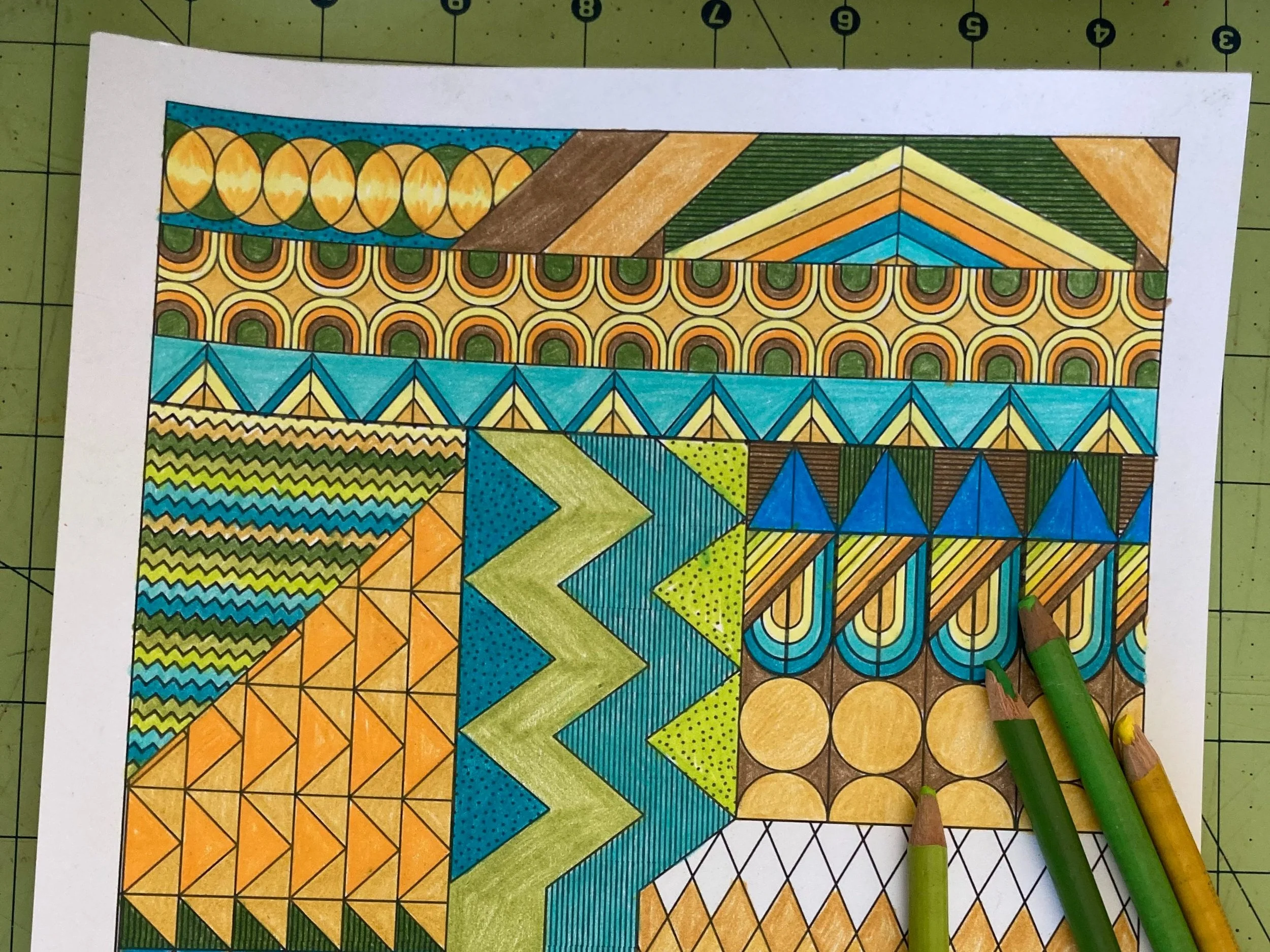Secondary Colors
Secondary colors are orange, violet, and green. These three colors are created using primary colors. On the color wheel, each hue is equidistant from each other. All three hues affect us emotionally, physically, and connect us with the world around us. Understanding secondary colors and their place in cultures can enhance your creative design process.
Green craft materials including ribbon, yarn, thread, beads and drawing supplies.
Green
Grass. Plants. Salad. Greed. Envy. Green, a hue that rests equally between yellow and blue on the color wheel and spectrum of visible light, is associated with lush foliage. In plants that hue is created by the presence of chlorophyll. For our ancestors, living on lush green land meant living well. It still means that to us. In the United States, the green color of our currency represents that primal understanding. In Islam, green is a sacred color because of it describes paradise. That is probably why the color is also associated with greed. The fact that it is dead center of the spectrum of visible light, probably also makes this comforting hue for people. The connection to fresh food and comfort makes this hue perfect for marketing natural or organic food. It is the perfect color for eco and environmental movements. If you read The Great Gatsby, then you may remember the green light of hope shining in the bay. Green symbolizes hope because it is the color of spring after bleak winter. People in the spring of their lives aka young folk are referred to as being green. Skin described as green means illness. Green eggs and ham, although a great book doesn’t sound appetizing. Neither does green beer. I’d rather eat kale. Mix yellow and blue pigments to create this natural hue.
“Its Not Easy Being Green” by Kermit the Frog
Orange thread, tape, and markers.
Orange
Citrus. Pumpkin. Carrot. Autumn. Warmth. Safety. This is created by mixing yellow and red pigments together. In the spectrum of light that is visible to humans, orange appears between red and yellow. The presence of carotene gives carrots, poppies, and sweet potatoes their distinctive hue. Since orange is associated with so many foods, food scientists often use synthesized dyes to create something familiar to us. For example, the color of Cheetos is completely unnatural but we accept it because it is in a range of hues that we associate with starchy nutrition. In western tradition, orange is associated with high energy, amusement and extroversion. This may because the hue is ubiquitous during the harvest time which is also a time of celebration. Not only is this hue the life of the party, it is also the warning sign. Safety gear is often orange. The Gold Gate Bridge is orange so that boats can see it through the fog. Buddhists regard the bright hue as the color of illumination which is the highest state of perfection. This is why Buddhist monks wear saffron-colored robes. Wandering holy men in India wear this illuminating hue for a similar reason. The brightly hued Mexican marigold is used during Dia de Los Muertos to illuminate the path of ancestors back to their families. Another connection to warmth and familiarity.
"Channel Orange” album by Frank Ocean
Violet beads, wool roving, cording, colored pencils, felt, markers, and thread.
Violet
Prince. Grapes. Eggplant. African violets. Lavender. Lilac. Violet is the last hue that humans can see on the spectrum of light. It sits between blue and invisible to humans ultraviolet. That position probably makes it rare in nature. Blue pigments like paint mixed with red create violet. Violet is interchangeably referred to as purple, but in color theory “purple” refers to a color slightly redder than violet. Throughout history, people created violet or purple pigments using shells, sea urchins, lapis lazuli, and the exoskeletons of insects. Those sources were rare to come by so it was expensive for dyeing cloth. That pricey cloth was reserved for aristocrats and clergy in Europe, Asia, and in Pre-Columbian Americas. This probably led to modern-day associations of violet or purple to royalty and piety. Later, women in suffragists wore purple to represent the royal blood in their veins. Being rare, this hue also symbolizes mystery, mysticism, and individuality. In Christian tradition, Jesus, a figure who is mystical and unique is often depicted wearing purple. In Eastern traditions, violet is associated with the Crown Chakra which represents wisdom. Sappho, a Greek poet who referenced violet in her poetry, has become a modern symbol of lesbian love and bi-sexuality. With the association to mystery, this hue has sex appeal. Do you think Prince consciously knew all of this when he decided to be “the Purple One”?
“Purple Rain” by Prince
Hopefully, you can use this knowledge to inform your creative practice.








Alternative retailers for purchasing craft supplies online.